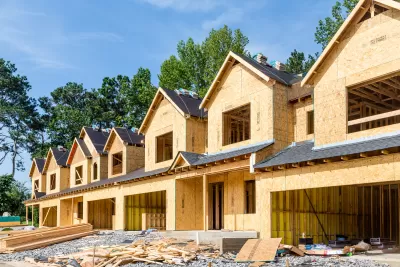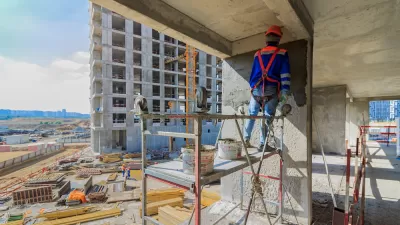An analysis of 12 U.S. cities found that new market-rate construction often leads to more affordable units becoming available, but the effect varies across housing markets.

A new study from the Federal Bank Reserve of Minneapolis shows that the construction of market-rate housing units leads to more available affordable housing units. Writing in BisNow, Kayla Carmicheal outlines the results of the study, which analyzed renter moves in 12 U.S. metro areas. “When high-income residents move into new market-rate housing, their previous homes are freed up for other renters or homebuyers. When those residents move, their old place is then available for others and the price on it may lower because of a shift in demand. This process is known as filtering.”
The study contributes to an ongoing debate over what policies are most effective in improving housing affordability and making more housing available to renters and homeowners alike. While some policies offer rental assistance and tax incentives for affordable housing developers, others can improve the overall building climate and boost the housing supply by streamlining permit processes and updating zoning regulations to meet today’s needs.
Carmicheal notes that filtering doesn’t occur evenly across cities. The study “found that the Minneapolis-St. Paul metro has a high rate of filtering, with nearly 0.6 affordable units opening up for every new market-rate unit, while New York City has a below-average rate of less than 0.2 units freed per new build.” Meanwhile, “When there are fewer homes available but high demand, older homes that used to be accessible to first-time home buyers are more likely to be snagged by higher-income residents over time,” amounting to a reverse effect and, in some cases, the displacement of older residents and the gentrification of previously low-income neighborhoods.
FULL STORY: Market-Rate Construction Frees Up More Affordable Homes, Study Finds

Planetizen Federal Action Tracker
A weekly monitor of how Trump’s orders and actions are impacting planners and planning in America.

Maui's Vacation Rental Debate Turns Ugly
Verbal attacks, misinformation campaigns and fistfights plague a high-stakes debate to convert thousands of vacation rentals into long-term housing.

Restaurant Patios Were a Pandemic Win — Why Were They so Hard to Keep?
Social distancing requirements and changes in travel patterns prompted cities to pilot new uses for street and sidewalk space. Then it got complicated.

In California Battle of Housing vs. Environment, Housing Just Won
A new state law significantly limits the power of CEQA, an environmental review law that served as a powerful tool for blocking new development.

Boulder Eliminates Parking Minimums Citywide
Officials estimate the cost of building a single underground parking space at up to $100,000.

Orange County, Florida Adopts Largest US “Sprawl Repair” Code
The ‘Orange Code’ seeks to rectify decades of sprawl-inducing, car-oriented development.
Urban Design for Planners 1: Software Tools
This six-course series explores essential urban design concepts using open source software and equips planners with the tools they need to participate fully in the urban design process.
Planning for Universal Design
Learn the tools for implementing Universal Design in planning regulations.
Heyer Gruel & Associates PA
JM Goldson LLC
Custer County Colorado
City of Camden Redevelopment Agency
City of Astoria
Transportation Research & Education Center (TREC) at Portland State University
Jefferson Parish Government
Camden Redevelopment Agency
City of Claremont





























